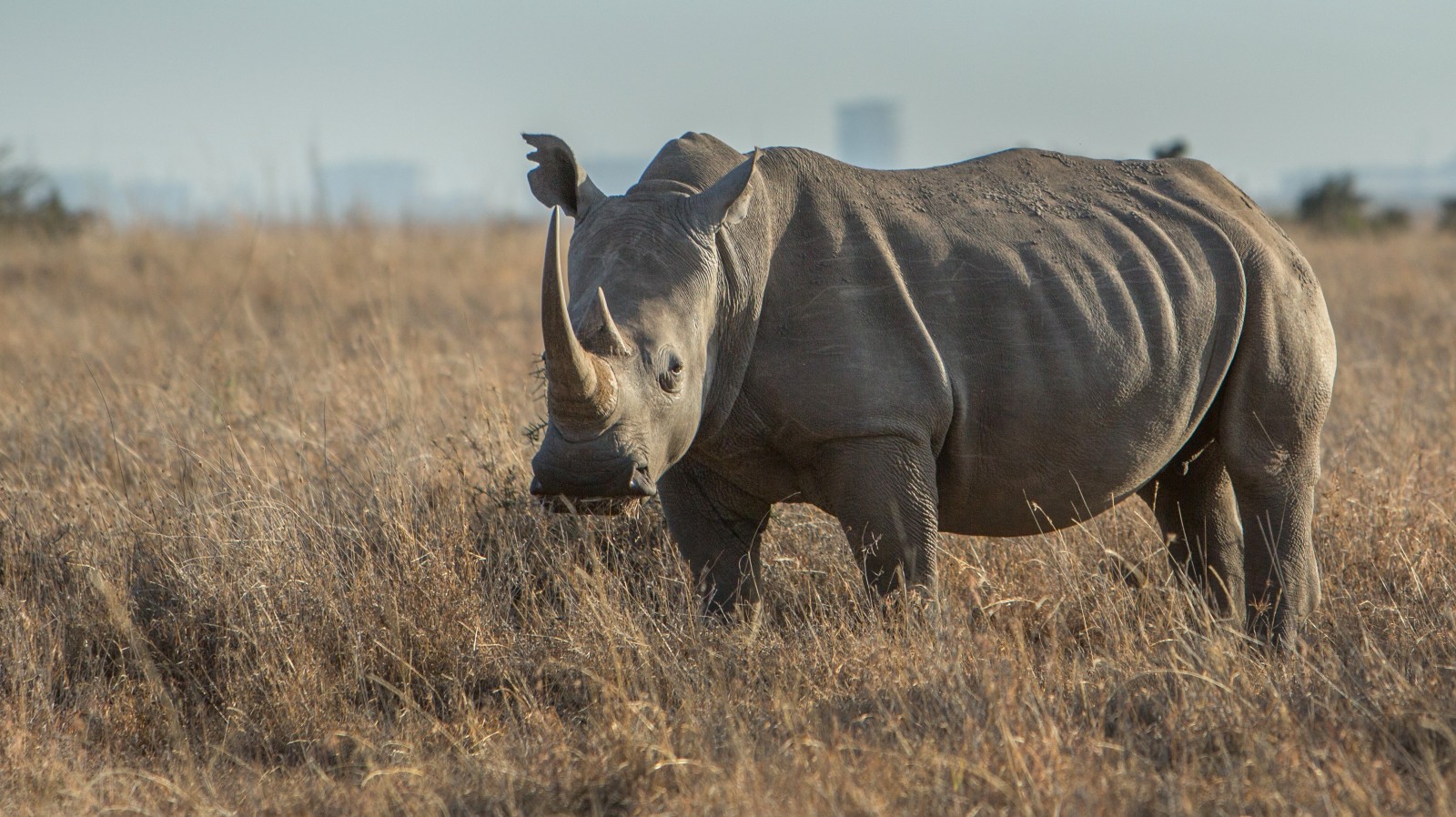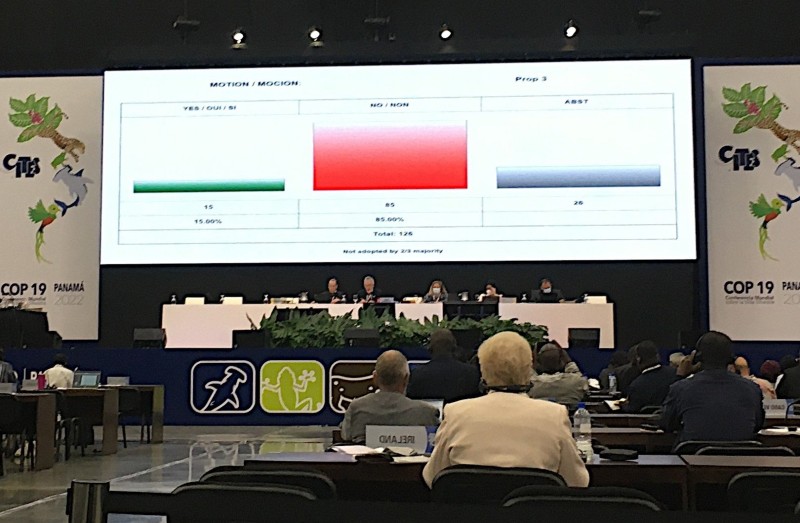Mixed results for protection of rhino populations from international trade
22 November 2022
MIXED RESULTS FOR PROTECTION OF RHINO POPULATIONS FROM INTERNATIONAL TRADE
First thing on Monday morning in Panama City, government delegates and non-governmental organisations attending the CITES meeting gathered to discuss two proposals – one from Eswatini to sell rhino horn, and another to reduce safeguards from trade for Namibia’s rhino population. Since the proposals were made public, Born Free, alongside partner organisations, has been asking that governments reject both outright.

© georgelogan.co.uk
Eswatini, home to a tiny population of just 98 rhinos was asking for the go ahead to sell an initial 330kg of rhino horn, and 20kg annually from then on. When presenting the proposal, Eswatini tried to sweeten the pill by suggesting a delay of 18 months to give “identified trading states time to ensure trade control mechanisms are properly and transparently negotiated and implemented”.
However, it was hard to imagine how this would be palatable, or even work in practice, given that horn trade is illegal in major demand countries, which have invested significant resources on demand reduction and other measures to implement the international ban (established by CITES in 1977), efforts that would be wholly undermined by authorizing international commercial trade.
Many range countries spoke, some in favour and some against the proposal. However, as the discussion progressed, it was clear that the tide was turning firmly against. Those in opposition referred to the likely impact of ending the international ban, and that the risk of severely increasing consumer demand for rhino horn, which in turn would fuel even more poaching than rhinos already suffer, was too great.

Given the divergent views, it went to a vote and the outcome was clear – proposal defeated!
Opposition to the Namibian proposal was just as strong, particularly from Senegal, Panama, Kenya, Israel and Benin, but those in support carried the day in reducing the protection level of Namibia’s rhinos. The outcome was that Namibia will now be able to trade in live white rhino for in-situ conservation purposes, but only to countries within their natural and historical range.
Later in the day, rhinos were back on the agenda with key measures being proposed on activities certain countries need to undertake to address poaching and rhino horn trafficking. However, consensus on which countries and which activities should be included was not reached, and the deliberations were moved into a Working Group composed of a handful of countries and NGOs, which is due to report back later this week.
While the poaching crisis facing the world’s rhinos somewhat lessened in severity during Covid-19 lock-downs, there are signs that this respite is now over. Between 2018 and 2021, there were 2,707 rhino poaching incidents across Africa, with Southern white rhinos suffering annual population declines of 3.1% since 2017, and with a population now numbering less than 16,000 rhinos. In Asia, greater one-horned and Javan rhinos are faring somewhat better, but the Sumatran rhino have seen a drop in population of 13% per year since 2017, and experts estimate that only between 34 and 47 remain, bringing the species ever closer to extinction.
Born free’s Senior Policy Advisor Gabriel Fava, who is in Panama for the meeting, said: “Illegal activity continues to play a prominent and deeply concerning role in the downward spiral of rhino populations in parts of their range, and it is critical that decisions made regarding international trade do not risk further imperilling their future. Born Free will maintain a close eye on trade levels, both legal and illegal, and continue to engage with governments as we get closer to the next CITES meeting in 2023 to ensure these magnificent animals are afforded the maximum possible protection.”
